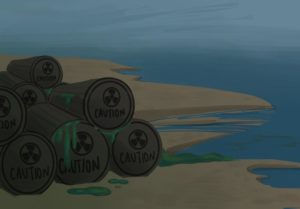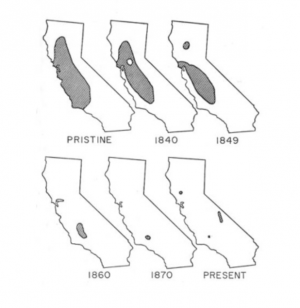California condor returns from the brink of extinction to grace Contra Costa County skies
May 16, 2022
In October 2021, for the first time in 100 years, a California condor – the largest flying bird in North America – graced Contra Costa County skies.
In 1987, there were only 27 condors remaining in the world. Conservation efforts spanning the past 34 years resurrected the species to the 504 birds present today. The sighting of a California Condor here in Contra Costa marked the hard-earned, historic success of a long recovery process.
Pinnacles Condor 828, a product of the release program in Pinnacles National Park, was spotted over Mount Diablo – the farthest north in western California that any condor has been since the recovery programs began. Her journey lasted three days and covered over 100 miles.
As Condor 828 approaches her breeding age (6 years), wildlife biologists speculate that she may be surveying new territory for possible nesting sites.
“Many of us have waited our whole lives for this kind of great news,” said Seth Adams, the land conservation director of Save Mount Diablo.
The Diablo Range is a major wildlife corridor for mountain lions and golden eagles, as well as a haven for peregrine falcons.
Peregrine falcons – the fastest birds in the world – have been documented diving up to 200 miles per hour while hunting smaller birds. They plummet through the air and knock into their prey with intense precision and speed. A single misplaced feather or minor injury could lead to death.
After the pesticide DDT wiped out the peregrines on Mount Diablo, a restoration program beginning in 1989 revitalized the population. Now peregrine falcons nest in the cliffs of Pine Canyon in Mount Diablo, competing with the recently restored populations of American kestrels.
California condors, with their magnificent wingspan of 9.5 feet, nest in caves on the side of cliff faces. With their drifting, circling flight paths, these dominating scavengers feed on mammal carcasses and have been around since the age of mammoths.
The California Condor Recovery Program, composed of joint efforts from 13 organizations, rehabilitated the rare birds through captive-breeding, nest management and reintroduction into the wild.
Lead poisoning from spent ammunition, microtrash ingestion (including glass, metal and antifreeze) and habitat degradation caused the decline of the condor population. Under pressure from and with the guidance of organizations such as Defenders of Wildlife, the California state legislature phased out the use of lead ammunition in wildlife hunting by 2019.
Currently, 329 wild condors ride the skies above California, Arizona, Utah and Baja California, Mexico; 175 are still in captivity.





